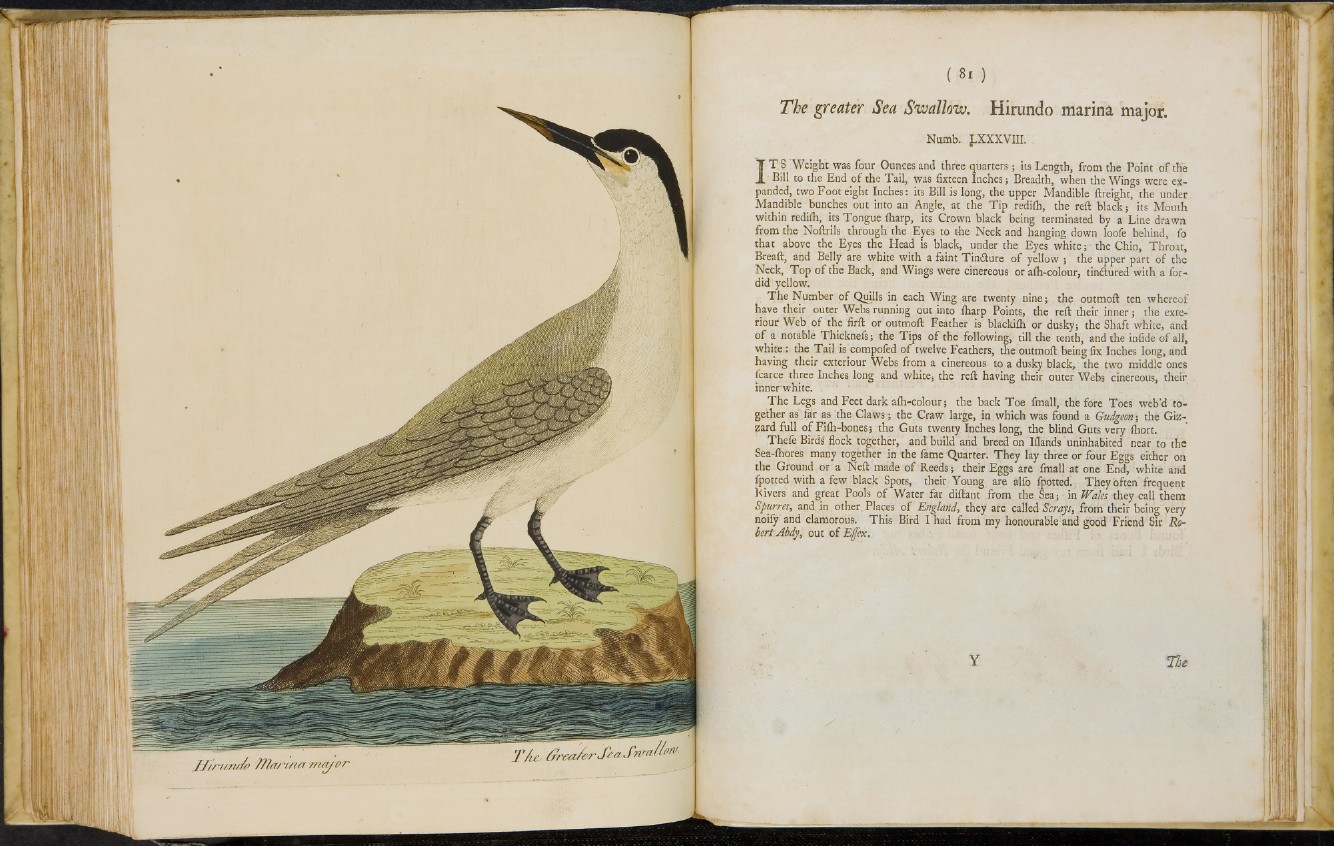
The greater Sea Swallow. Hirundo marina major.
Numb. pCXXVIII. .
IT S Weight was four Ounces and three quarters; its Length, from the Point of the
Bill to the End of the Tail, was fixteen Inches; Breadth, when the Wings were expanded,
twp Foot eight Inches: its Bill is long, the upper Mandible ftreight, the under
Mandible bunches out into an Angle, at the Tip redifh, the reft black; its Mouth
within rediih, its Tongue (harp, its Crown black being terminated by a Line drawn
from the Noftrils through the Eyes to the Neck and hanging down loofe behind, fo
that above the Eyes the Head is black, under the Eyes white; the Chin, Throat,
Breaft, and Belly are white with a faint Tin&ure of yellow ; the upper part of the
Neck, Top of the Back, and Wings were cinereous or afh-colour, tin&ured with a fordid
yellow.
The Number of Quills in each Wing are twenty nine; the outmoft ten whereof
have their outer Webs running out into fharp Points, the reft their inner; the exte-
fiour Web of the firft or outmoft Feather is blackifh or dusky; the Shaft white, and
of a notable Thicknefs; the Tips of the following, till the tenth, and the iniide of all,
white : the Tail is compoied of twelve Feathers, the outmoft being fix Inches long, and
having their exteriour Webs from a cinereous to a dusky black, the two middle ones
fcarce three Inches long and white, the reft having their outer Webs cinereous, their
innerwhite. .
The Legs and Feet dark afh-colour; the back Toe fmall, the fore Toes web’d together
as' far as the Claws ; the Craw large, in which was found a Gudgeon-, the Gizzard
full of Fiih-bones; the Guts twenty Inches long, the blind Guts very ihort.
Thefe Birds' flock together, and build and breed on Iflands uninhabited near to the
Sea-lhores many together in the fame Quarter. They lay three or four Eggs either on
the Ground or a Neft made of Reeds; their Eggs are fmall at one End, white and
fpotted with a few black Spots, their Young are alfo fpotted. They often frequent
Rivers and great Pools of Water far diftant from the Sea, in Wales they call them
Spurres, and in other. Places of England, they are called S'crays, from their being very
noiiy and clamorous. This Bird 1 had from my honourable and good Friend Sir Robert
Abdy, out of Effex.
Y